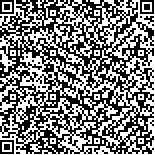本文已被:浏览 913次 下载 542次
Received:September 09, 2021 Published Online:March 20, 2022
Received:September 09, 2021 Published Online:March 20, 2022
中文摘要: 目的 观察联合心理治疗对灼口综合征(BMS)患者唾液皮质醇浓度水平的影响,评估其临床治疗效果。 方法 选取2017年1月至2020年12月南京大学医学院附属口腔医院收治的31例BMS患者,随机分为联合治疗组16例,采用心理+口炎清治疗;药物治疗组15例,采用口炎清治疗,选取同时期健康人群16例作为对照组。分别在基线(T0)、治疗30 d(T1)、治疗60 d(T2,即治疗结束时)和治疗结束4个月随访时(T3),对三组受试者进行焦虑自评量表(SAS)、抑郁自评量表(SDS)、视觉评分法(VAS)的评估,对晨起唾液皮质醇浓度进行测定;对各指标不同时点的变化及组间差异进行比较。 结果 BMS两组患者T0时的SAS评分、SDS评分、唾液皮质醇浓度均高于对照组(P<0.01)。联合治疗组唾液皮质醇浓度 T2、T3时均低于药物治疗组(P<0.05);联合治疗组T3时SAS恢复至与对照组相近(P>0.05),并显著低于药物治疗组(P<0.05)。 结论 BMS患者唾液皮质醇浓度升高及负性情绪有关。对BMS的治疗应联合心理治疗手段,以提高临床治疗效果。
Abstract:Objective To observe the effect of combined psychotherapy on the concentration of salivary cortisol in patients with burning mouth syndrome (BMS), and to evaluate its clinical therapeutic effect. Methods A total of 31 patients with BMS treated in the Affiliated Stomatological Hospital of Medical College of Nanjing University from January 2017 to December 2020 were collected (randomly divided into 16 cases in the combined treatment group, treated with psychological intervention + Kouyanqing; 15 cases in the drug treatment group, treated with Kouyanqing), and 16 healthy cases in the control group. At baseline (T0), 30 days of treatment (T1), the end of 60 days of treatment (T2) and 4 months of follow-up (T3), the subjects in the three groups were evaluated by SAS,SDS and VAS, and the concentration of cortisol in saliva in the morning was measured, and the changes of each index at different time points and the differences between groups were compared. Results The SAS, SDS and salivary cortisol concentration at T0 in two groups of BMS patinets were higher than those in the control group (P<0.01). The salivary cortisol concentrations of combined treatment group at T2 and T3 were lower than those of drug treatment group (P<0.05). The SAS recovery of the combined treatment group at T3 was similar to that of the control group (P>0.05), and was significantly lower than that of the drug treatment group (P<0.05).
Conclusion Increased salivary cortisol concentration is associated with negative emotions in BMS patients. The treatment of BMS should be combined with psychotherapy, which can improve the clinical treatment effect.
文章编号: 中图分类号:R781 文献标志码:B
基金项目:国家自然科学基金(81870767);江苏省临床医学专项(BL2014018)
引用文本:
